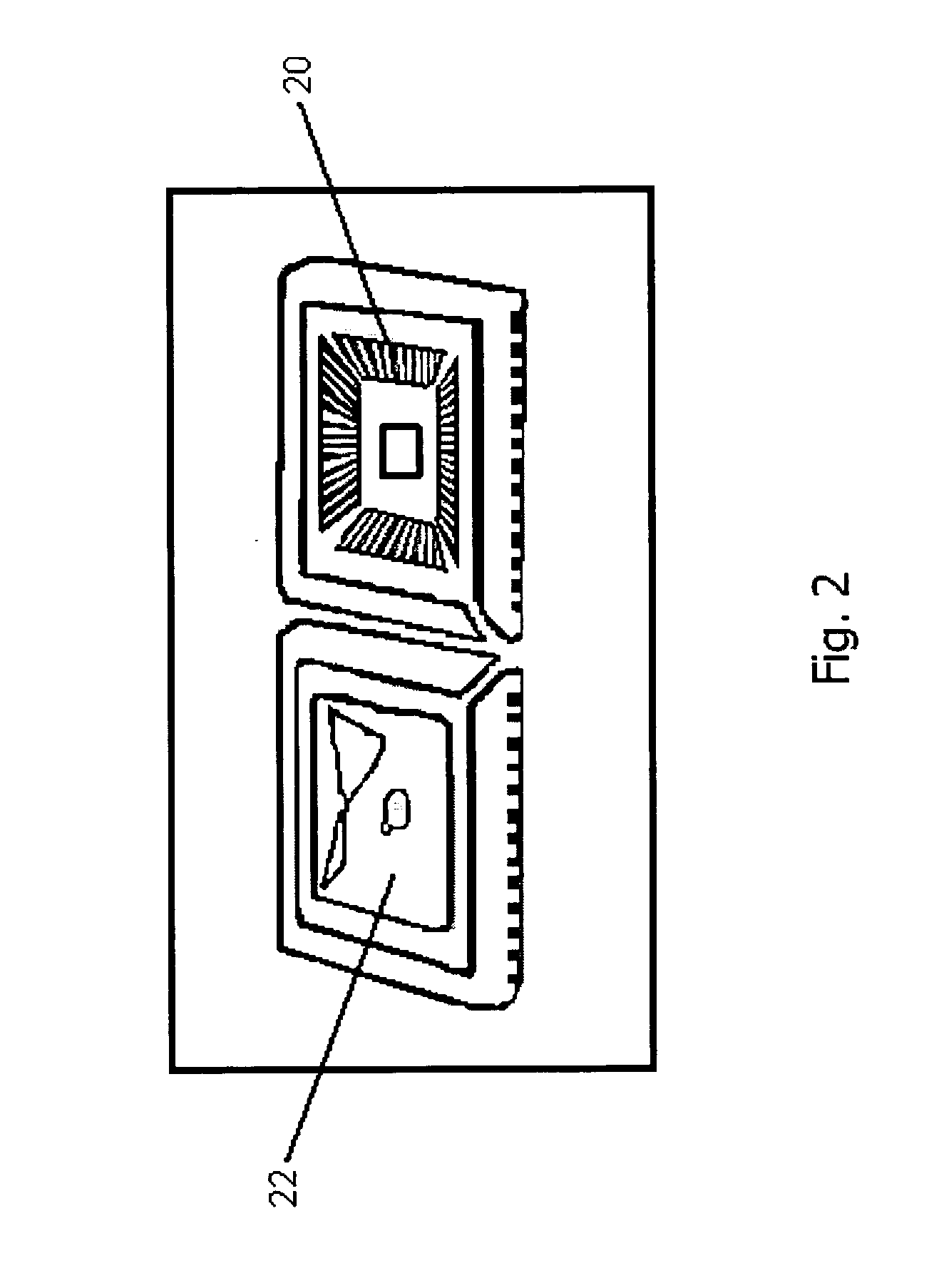Integrated circuit optical detector for biological detection
an integrated circuit and optical detector technology, applied in the field of optical detectors, can solve the problems of unreliable testing results, difficult to process conduction data using noise reduction techniques, and relatively expensive process, and achieve the effect of high sensitivity
- Summary
- Abstract
- Description
- Claims
- Application Information
AI Technical Summary
Benefits of technology
Problems solved by technology
Method used
Image
Examples
embodiment
Preferred Embodiment
[0035]FIG. 8 shows a preferred embodiment of the present invention, that of detection and identification of DNA sequences in a sample. The DNA fragment detection process using the IC optical detector is as described in previous Figures. Typically, the IC optical detector includes a substrate (not shown in FIG. 8) and an IC including at least one photodiode array 80. The photodiode array 80 can be CMOS image sensors or charge-coupled device (CCD) array. The surface 82 of the photodiode array 80 usually has a plurality of test sites and is modified in order to form covalent bonding with the a plurality of DNA probes 84 adapted for receiving at least one test sample. In one embodiment, the photodiode array 80 is formed within the substrate such that the surface 82 is the substrate surface.
[0036] Typically, a specific sample DNA 88 is modified with Adenosine polymer (poly A) tails. These sample DNA 88 may be applied to the photodiode array surface 82 in solution for...
PUM
| Property | Measurement | Unit |
|---|---|---|
| diameter | aaaaa | aaaaa |
| optical signals | aaaaa | aaaaa |
| electrical | aaaaa | aaaaa |
Abstract
Description
Claims
Application Information
 Login to View More
Login to View More - R&D
- Intellectual Property
- Life Sciences
- Materials
- Tech Scout
- Unparalleled Data Quality
- Higher Quality Content
- 60% Fewer Hallucinations
Browse by: Latest US Patents, China's latest patents, Technical Efficacy Thesaurus, Application Domain, Technology Topic, Popular Technical Reports.
© 2025 PatSnap. All rights reserved.Legal|Privacy policy|Modern Slavery Act Transparency Statement|Sitemap|About US| Contact US: help@patsnap.com



